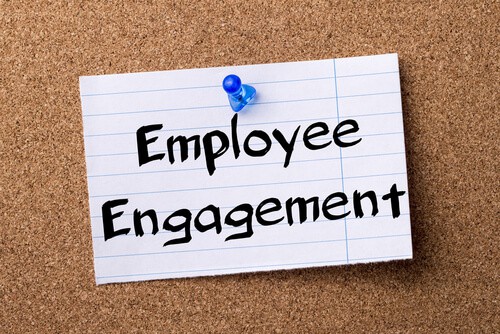According to a Dale Carnegie infographic, companies with engaged employees outperform those without by up to 202 percent. However, 71 percent of employees are not fully engaged. A typical engaged employee exhibits 4 telltale signs—enthusiasm, inspiration, empowerment, and confidence. Make sure your employees are displaying these signs by implementing the following employee engagement best practices, from Entrepreneur.com and Inc.com.
- Start with smart recruiting. To effectively engage your employees, you must start with the right people. Cultural fit is a key to employee engagement—keep this in mind when you are hiring members of your team.
- Create a social contract. Openly set values for your company and continually stress them to your team. If your social contract is positive and goal oriented, so will your team.
- Bring your mission statement down to earth. If the mission statement is too supercilious, it can be hard for your team to connect with it and be motivated by it. IDEO’s head of global talent Duane Bray says, “Bring the goal down to earth by simplifying it and connecting it to the employees’ every day work. Tailor the company’s mission to each team’s specific function.”
- Get interactive and encourage collaboration. Employees should interact with each other not only to share creativity and ideas, but also as a personal pick-me-up to keep going with the day. Humans need social interaction to stay interested and sharp. Be sure your workspace is tailored to facilitate interaction and collaboration.
- Implement education and development. Employees desire the ability to grow and develop within the organization; without it, they may not see a point in all their hard work. Whether it is offering in-house training, sending team members to seminars or functions, or MOOCs (massive online open courses), it will not go unappreciated to provide your employees with the chance for education and development.
- Foster bottom-up creativity. Creativity cannot be demanded. This means having a top-down directive to creativity is ineffective. Employees need the freedom to cultivate their creativity and present it to the team, rather than being required to produce creativity on command.
- Operate with transparency. If employees aren’t included in company information, they can feel unappreciated and unnecessary—two huge aggressors against employee engagement. Keep lines of communication open and honest with your team. The more they understand the organization, the more they can get invested in it and help it.
Employee engagement is a necessity for a happy, healthy, and successful workforce. Engaged employees deliver the best performance, so do what it takes to get your team there.




